formerly eScholarship Editions


|
|
|
|
Your request for similar items found 20 book(s). | Modify Search | Displaying 1 - 20 of 20 book(s) | |
| 1. | 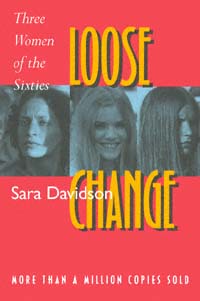 | Title: Loose change: three women of the sixties Author: Davidson, Sara Published: University of California Press, 1997 Subjects: Literature | Fiction | Californian and Western History | California and the West Publisher's Description: This is a compelling story of the experiences of three young women who attended the University of California at Berkeley and became caught up in the tumultuous changes of the Sixties. Sara Davidson follows the three - Susie, Tasha, and Sara herself - from their first meeting in 1962, through the events that "radicalized" them in unexpected ways in the decade after the years in Berkeley. Susie navigates through the Free Speech Movement and the early women's movement in Berkeley, and Tasha enters the trendy New York art and society scene. Sara, a journalist, travels the country reporting on the stories of the sixties.The private lives that Davidson reconstructs are set against the public background of the time. Figures such as Timothy Leary, Mario Savio, Tom Hayden, and Joan Baez are here, as are the many young people who sought alternatives to "the establishment" through whatever means seemed worth exploring: radical politics, meditation, drugs, group sex, or dropping out. Davidson's honest and detailed chronicle reveals the hopes, confusion, and disillusionment of a generation whose rites of passage defined one of the most contentious decades of this century. [brief] Similar Items |
| 2. | 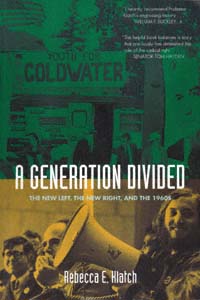 | Title: A generation divided: the new left, the new right, and the 1960s Author: Klatch, Rebecca E Published: University of California Press, 1999 Subjects: Sociology | American Studies | Politics Publisher's Description: The 1960s was not just an era of civil rights, anti-war protest, women's liberation, hippies, marijuana, and rock festivals. The untold story of the 1960s is in fact about the New Right. For young conservatives the decade was about Barry Goldwater, Ayn Rand, an important war in the fight against communism, and Young Americans for Freedom (YAF). In A Generation Divided , Rebecca Klatch examines the generation that came into political consciousness during the 1960s, telling the story of both the New Right and the New Left, and including the voices of women as well as men. The result is a riveting narrative of an extraordinary decade, of how politics became central to the identities of a generation of people, and how changes in the political landscape of the 1980s and 1990s affected this identity. [brief] Similar Items |
| 3. | 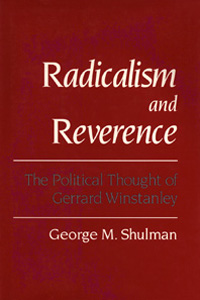 | Title: Radicalism and reverence: the political thought of Gerrard Winstanley Author: Shulman, George M Published: University of California Press, 1989 Subjects: Politics | European History Publisher's Description: One of the most undeservedly neglected political theorists of the seventeenth century, Gerrard Winstanley is a fascinating figure who wrote broadly and creatively on issues that appear surprisingly modern to his present-day readers. His theoretical approach to the English revolution knit together such diverse concerns as Puritanism, the emerging market economy, and the dilemmas of radical politics. His strong commitment to both personal autonomy and collective action led him towards an alternative to the Puritanism, market institutions, and political violence that he analyzed.In his incisive new book, George Shulman examines the life and work of this important thinker. He traces Winstanley's movement from theorizing about God and the "rebirth" of the self to active leadership of the "diggers," a group of radical activists who occupied not yet enclosed common lands. As Winstanley both used and moved beyond his own Puritan heritage, he was able to confront the social and political realities of his time in a language that related them to psychological experience. His richly metaphoric language, and the vision of freedom it embodied, joined psychological, social, and political dimensions of life.By imaginatively reconstructing Winstanley's unified approach to the 1640s, this book seeks to illuminate what was at stake at that time and relate it to contemporary debates about the self, politics, and language. Shulman creates a conversation across time about questions that still animate thinkers today. [brief] Similar Items |
| 4. | 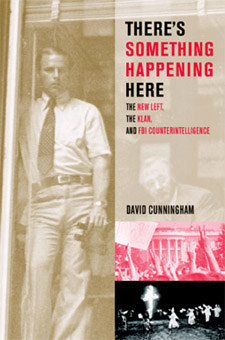 | Title: There's something happening here: the New Left, the Klan, and FBI counterintelligence Author: Cunningham, David 1970- Published: University of California Press, 2004 Subjects: American Studies | History | Politics | Sociology | Law Publisher's Description: Using over twelve thousand previously classified documents made available through the Freedom of Information Act, David Cunningham uncovers the riveting inside story of the FBI's attempts to neutralize political targets on both the Right and the Left during the 1960s. Examining the FBI's infamous counterintelligence programs (COINTELPROs) against suspected communists, civil rights and black power advocates, Klan adherents, and antiwar activists, he questions whether such actions were aberrations or are evidence of the bureau's ongoing mission to restrict citizens' right to engage in legal forms of political dissent. At a time of heightened concerns about domestic security, with the FBI's license to spy on U.S. citizens expanded to a historic degree, the question becomes an urgent one. This book supplies readers with insights and information vital to a meaningful assessment of the current situation. There's Something Happening Here looks inside the FBI's COINTELPROs against white hate groups and the New Left to explore how agents dealt with the hundreds of individuals and organizations labeled as subversive threats. Rather than reducing these activities to a product of the idiosyncratic concerns of longtime director J. Edgar Hoover, Cunningham focuses on the complex organizational dynamics that generated literally thousands of COINTELPRO actions. His account shows how--and why--the inner workings of the programs led to outcomes that often seemed to lack any overriding logic; it also examines the impact the bureau's massive campaign of repression had on its targets. The lessons of this era have considerable relevance today, and Cunningham extends his analysis to the FBI's often controversial recent actions to map the influence of the COINTELPRO legacy on contemporary debates over national security and civil liberties. [brief] Similar Items |
| 5. | 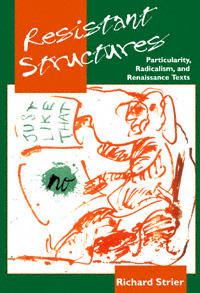 | Title: Resistant structures: particularity, radicalism, and Renaissance texts Author: Strier, Richard Published: University of California Press, 1997 Subjects: Literature | Literary Theory and Criticism | Renaissance Literature | English Literature Publisher's Description: Taking Wittgenstein's "Don't think, but look" as his motto, Richard Strier argues against the application of a priori schemes to Renaissance (and all) texts. He argues for the possibility and desirability of rigorously attentive but "pre-theoretical" reading. His approach privileges particularity and attempts to respect the "resistant structures" of texts. He opposes theories, critical and historical, that dictate in advance what texts must - or cannot - say or do.The first part of the book, "Against Schemes," demonstrates, in discussions of Rosemond Tuve, Stephen Greenblatt, and Stanley Fish among others, how both historicist and purely theoretical approaches can equally produce distortion of particulars. The second part, "Against Received Ideas," shows how a variety of texts (by Shakespeare, Donne, Herbert, and others) have been seen through the lenses of fixed, mainly conservative ideas in ways that have obscured their actual, surprising, and sometimes surprisingly radical content. [brief] Similar Items |
| 6. | 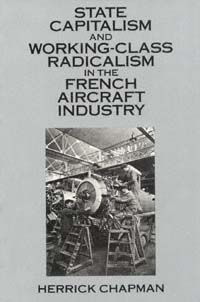 | Title: State capitalism and working-class radicalism in the French aircraft industry Author: Chapman, Herrick Published: University of California Press, 1990 Subjects: History | European History | Politics | Technology and Society | French Studies Publisher's Description: In the 1950s and 1960s France experienced an economic miracle. As the state's role expanded with efforts to create a more modern economy, however, labor relations remained more volatile and workers more radical than elsewhere in western Europe. Herrick Chapman argues in this important new book that state capitalism and working-class radicalism went hand-in-hand and that both have antecedents in the tumultuous events of the 1930s and 1940s.The author focuses on a key industry - aviation - which held center stage in France from the Great Depression to the Cold War. While manufacturers and state officials struggled to modernize, the aviation industry became a bastion of the Communist Party and an arena of combat where workers, employers, and officials promoted competing visions of industrial reform. This gave rise to a new environment where state intervention and working-class radicalism became mutually reinforcing, and by the postwar era a peculiarly contentious form of industrial politics had become firmly entrenched.Using local and national archives, the author analyzes not only how an industry transformed but also how people reacted to the Popular Front, the defeat of 1940, the Nazi Occupation, and the onset of the Cold War. He also sheds light on such central themes in modern French history as the style of entrepreneurship, the sources of state interventionism, the response of workers to technological change and the nature of the Communist movement. [brief] Similar Items |
| 7. | 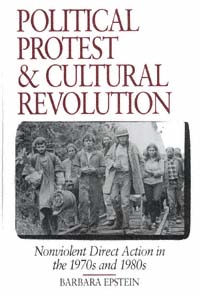 | Title: Political protest and cultural revolution: nonviolent direct action in the 1970s and 1980s Author: Epstein, Barbara Published: University of California Press, 1991 Subjects: History | Politics | American Studies | United States History | Sociology Publisher's Description: From her perspective as both participant and observer, Barbara Epstein examines the nonviolent direct action movement which, inspired by the civil rights movement, flourished in the United States from the mid-seventies to the mid-eighties. Disenchanted with the politics of both the mainstream and the organized left, and deeply committed to forging communities based on shared values, activists in this movement developed a fresh, philosophy and style of politics that shaped the thinking of a new generation of activists. Driven by a vision of an ecologically balanced, nonviolent, egalitarian society, they engaged in political action through affinity groups, made decisions by consensus, and practiced mass civil disobedience.The nonviolent direct action movement galvanized originally in opposition to nuclear power, with the Clamshell Alliance in New England and then the Abalone Alliance in California leading the way. Its influence soon spread to other activist movements - for peace, non-intervention, ecological preservation, feminism, and gay and lesbian rights.Epstein joined the San Francisco Bay Area's Livermore Action Group to protest the arms race and found herself in jail along with a thousand other activists for blocking the road in front of the Lawrence Livermore Laboratory. She argues that to gain a real understanding of the direct action movement it is necessary to view it from the inside. For with its aim to base society as a whole on principles of egalitarianism and nonviolence, the movement sought to turn political protest into cultural revolution. [brief] Similar Items |
| 8. | 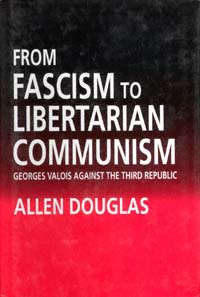 | Title: From fascism to libertarian communism: Georges Valois against the Third Republic Author: Douglas, Allen 1949- Published: University of California Press, 1993 Subjects: History | European History | French Studies | Politics Publisher's Description: Georges Valois is the enigma who stands at the center of French fascism. Writer, publisher, economic and political organizer, Valois went from adolescent anarchism to fascism and finally to libertarian socialism. His career has mystified scholars, as it did his contemporaries. From Fascism to Libertarian Communism is the first study of Valois to take his entire life and work as its focus, explaining how certain basic assumptions and patterns of thought took form in strikingly different ideological options. Douglas's work, based on a thorough examination of sources from police archives to personal papers and interviews, provides a convincing explanation of this quixotic figure - a man who founded French fascism only to turn to the radical left and eventually die as a resister in Bergen-Belsen.At a time when radical socialism is in decline and neofascist movements are gaining renewed support - in France and elsewhere - this original interpretation of Georges Valois's life and thought could not be more timely. [brief] Similar Items |
| 9. |  | Title: Plant migration: the dynamics of geographic patterning in seed plant species Author: Sauer, Jonathan D Published: University of California Press, 1988 Subjects: Environmental Studies | Geography | Ecology | Botany Publisher's Description: Using cases of plant migration documented by both historical and fossil evidence, Jonathan D. Sauer provides a landmark assessment of what is presently known, and not merely assumed, about the process. Similar Items |
| 10. | 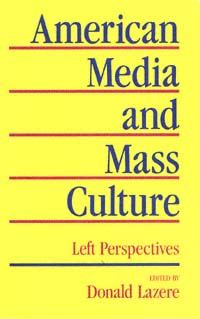 | Title: American media and mass culture: left perspectives Author: Lazere, Donald Published: University of California Press, 1987 Subjects: History | United States History | Media Studies Similar Items |
| 11. | 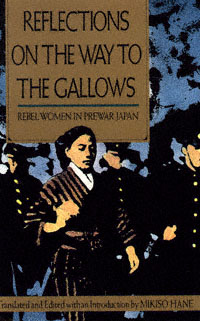 | Title: Reflections on the way to the gallows: rebel women in prewar Japan Author: Hane, Mikiso Published: University of California Press, 1988 Subjects: History | Asian Studies | Japan | Women's Studies | Asian History Publisher's Description: In this book, for the first time, we can hear the startling, moving voices of adventurous and rebellious Japanese women as they eloquently challenged the social repression of prewar Japan. The extraordinary women whose memoirs, recollections, and essays are presented here constitute a strong current . . . [more] Similar Items |
| 12. | 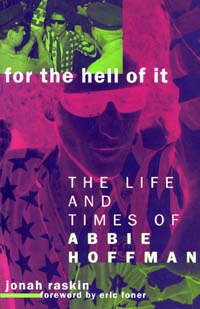 | Title: For the hell of it: the life and times of Abbie Hoffman Author: Raskin, Jonah 1942- Published: University of California Press, 1997 Subjects: American Studies | United States History | Politics | Autobiographies and Biographies Publisher's Description: As cultural revolutionary, media celebrity, Yippie, lost soul, and tragic suicide, Abbie Hoffman embodied the contradictions of his era. In this riveting new biography, Jonah Raskin draws on his own twenty-year relationship with Hoffman; hundreds of interviews with friends, family members, and former comrades; and careful scrutiny of FBI files, court records, and public documents. For the Hell of It is a must-read not only for those interested in this ultimate iconoclast, but also for all who seek a fuller understanding of Abbie Hoffman's America. [brief] Similar Items |
| 13. | 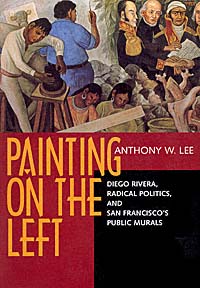 | Title: Painting on the left: Diego Rivera, radical politics, and San Francisco's public murals Author: Lee, Anthony W 1960- Published: University of California Press, 1999 Subjects: Art | Art History | Californian and Western History | California and the West Publisher's Description: The boldly political mural projects of Diego Rivera and other leftist artists in San Francisco during the 1930s and early 1940s are the focus of Anthony W. Lee's fascinating book. Led by Rivera, these painters used murals as a vehicle to reject the economic and political status quo and to give visible form to labor and radical ideologies, including Communism.Several murals, and details of others, are reproduced here for the first time. Of special interest are works by Rivera that chart a progress from mural paintings commissioned for private spaces to those produced as a public act in a public space: Allegory of California, painted in 1930-31 at the Stock Exchange Lunch Club; Making a Fresco, Showing the Building of a City , done a few months later at the California School of Fine Arts; and Pan American Unity , painted in 1940 for the Golden Gate International Exposition.Labor itself became a focus of the new murals: Rivera painted a massive representation of a construction worker just as San Francisco's workers were themselves organizing; Victor Arnautoff, Bernard Zakheim, John Langley Howard , and Clifford Wight painted panels in Coit Tower that acknowledged the resolve of the dockworkers striking on the streets below. Radical in technique as well, these muralists used new compositional strategies of congestion, misdirection, and fragmentation, subverting the legible narratives and coherent allegories of traditional murals.Lee relates the development of wall painting to San Francisco's international expositions of 1915 and 1939, the new museums and art schools, corporate patronage, and the concerns of immigrants and ethnic groups. And he examines how mural painters struggled against those forces that threatened their practice: the growing acceptance of modernist easel painting, the vagaries of New Deal patronage, and a wartime nationalism hostile to radical politics. [brief] Similar Items |
| 14. | 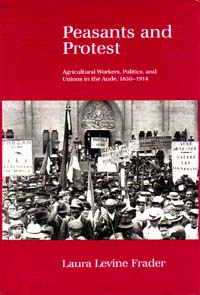 | Title: Peasants and protest: agricultural workers, politics, and unions in the Aude, 1850-1914 Author: Frader, Laura Levine 1945- Published: University of California Press, 1991 Subjects: History | European History | Gender Studies | French Studies Publisher's Description: In the first decade of the twentieth century, the sleepy vineyard towns of the Aude department of southern France exploded with strikes and protests. Agricultural workers joined labor unions, the Socialist party established a base among peasant vinegrowers, and the largest peasant uprising of twentieth-century France, the great vinegrowers' revolt of 1907, shook the entire south with massive demonstrations. In this study, Laura Levine Frader explains how left-wing politics and labor radicalism in the Aude emerged from the economic and social transformation of rural society between 1850 and 1914. She describes the formation of an agricultural wage-earning class, and discusses how socialism and a revolutionary syndicalist labor movement together forged working-class identity.Frader's focus on the making of the rural proletariat takes the study of class formation out of the towns and cities and into the countryside. Frader emphasizes the complexity of social structure and political life in the Aude, describing the interaction of productive relations, the gender division of labor, community solidarities, and class alliances. Her analysis raises questions about the applicability of an urban, industrial model of class formation to rural society. This study will be of interest to French social historians, agricultural historians, and those interested in the relationship between capitalism, class formation, and labor militancy. [brief] Similar Items |
| 15. | 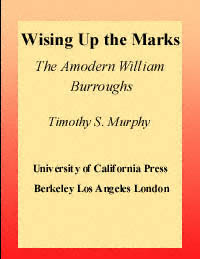 | Title: Wising up the marks: the modern William Burroughs Author: Murphy, Timothy S 1964- Published: University of California Press, 1998 Subjects: Literature | American Studies | Literary Theory and Criticism | Philosophy Publisher's Description: William S. Burroughs is one of the twentieth century's most visible, controversial, and baffling literary figures. In the first comprehensive study of the writer, Timothy S. Murphy places Burroughs in the company of the most significant intellectual minds of our time. In doing so, he gives us an immensely readable and convincing account of a man whose achievements continue to have a major influence on American art and culture. Murphy draws on the work of such philosophers as Gilles Deleuze, Félix Guattari, Theodor Adorno, and Jean-Paul Sartre, and also investigates the historical contexts from which Burroughs's writings arose.From the paranoid isolationism of the Cold War through the countercultural activism of the sixties to the resurgence of corporate and state control in the eighties, Burroughs's novels, films, and music hold a mirror to the American psyche. Murphy coins the term "amodernism" as a way to describe Burroughs's contested relationship to the canon while acknowledging the writer's explicit desire for a destruction of such systems of classification. Despite the popular mythology that surrounds Burroughs, his work has been largely excluded from the academy of American letters. Finally here is a book that presents a solid portrait of a major artistic innovator, a writer who combines aesthetics and politics and who can perform as anthropologist, social goad, or media icon, all with consummate skill. [brief] Similar Items |
| 16. | 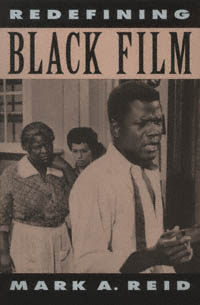 | Title: Redefining Black film Author: Reid, Mark (Mark A.) Published: University of California Press, 1993 Subjects: Cinema and Performance Arts | Film | African American Studies Publisher's Description: Can films about black characters, produced by white filmmakers, be considered "black films"? In answering this question, Mark Reid reassesses black film history, carefully distinguishing between films controlled by blacks and films that utilize black talent, but are controlled by whites. Previous black film criticism has "buried" the true black film industry, Reid says, by concentrating on films that are about, but not by, blacks.Reid's discussion of black independent films - defined as films that focus on the black community and that are written, directed, produced, and distributed by blacks - ranges from the earliest black involvement at the turn of the century up through the civil rights movement of the Sixties and the recent resurgence of feminism in black cultural production. His critical assessment of work by some black filmmakers such as Spike Lee notes how these films avoid dramatizations of sexism, homophobia, and classism within the black community.In the area of black commercial film controlled by whites, Reid considers three genres: African-American comedy, black family film, and black action film. He points out that even when these films use black writers and directors, a black perspective rarely surfaces.Reid's innovative critical approach, which transcends the "black-image" language of earlier studies - and at the same time redefines black film - makes an important contribution to film history. Certain to attract film scholars, this work will also appeal to anyone interested in African-American and Women's Studies. [brief] Similar Items |
| 17. | 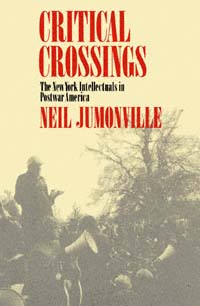 | Title: Critical crossings: the New York intellectuals in postwar America Author: Jumonville, Neil Published: University of California Press, 1990 Subjects: History | Autobiographies and Biographies | Sociology | Politics | American Studies Publisher's Description: The period immediately following the Second World War was a time, observed Randall Jarrell, when many American writers looked to the art of criticism as the representative act of the intellectual. Rethinking this interval in our culture, Neil Jumonville focuses on the group of writers and thinkers who founded, edited, and wrote for some of the most influential magazines in the country, including Partisan Review , Politics , Commentary , and Dissent . In their rejection of ideological, visionary, and romantic outlooks, reviewers and essayists such as Sidney Hook, Irving Howe, Lionel Trilling, Harold Rosenberg, and Daniel Bell adopted a pragmatic criticism that had a profound influence on the American intellectual community. By placing pragmatism at the center of intellectual activity, the New York Critics crossed from large belief systems to more tentative answers in the hope of redefining the proper function of the intellectual in the new postwar world.Because members of the New York group always valued being intellectuals more than being political leftists, they adopted a cultural elitism that opposed mass culture. Ready to combat any form of absolutist thought, they found themselves pitted against a series of antagonists, from the 1930s to the present, whom they considered insufficiently rational and analytical to be good intellectuals: the Communists and their sympathizers, the Beat writers, and the New Left. Jumonville tells the story of some of the paradoxes and dilemmas that confront all intellectuals. In this sense the book is as much about what it means to be an intellectual as it is about a specific group of thinkers. [brief] Similar Items |
| 18. | 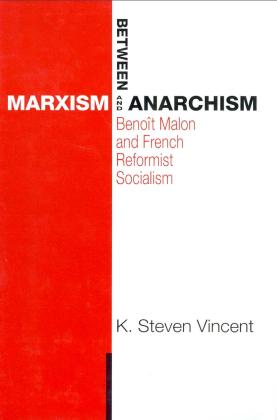 | Title: Between Marxism and Anarchism: Benoît Malon and French reformist socialism Author: Vincent, K. Steven Published: University of California Press, 1992 Subjects: History | French Studies | European History Publisher's Description: Here is the first scholarly study of the life and thought of Benoît Malon (1841-1893), the most persuasive and visible spokesman for reformist socialism during the early years of the French Third Republic.Active in the generation of the French Left that came of age under the Second Empire, Malon was a prominent member of the First International in Paris and later joined the Paris Commune. As a result, he was forced into exile in Switzerland and Italy during the 1870s, where he became entangled in the struggles within the International. Malon attempted to steer a course between Marxist authoritarianism and anarchist utopianism, which he continued on his return to France in 1880.Vincent analyzes Malon's role as activist, editor, and author, arguing that Malon drew on a strong tradition of left-wing French republicanism. In his mature works, Malon articulated a socialism that emphasized broad moral and socioeconomic reform and advocated parliamentary rule as the appropriate source of national sovereignty. In helping the republican socialist Left shed its revolutionary associations, he pointed the way for later reformist socialists from Jean Jaurès to François Mitterrand. [brief] Similar Items |
| 19. | 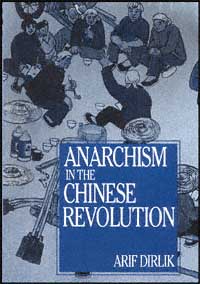 | Title: Anarchism in the Chinese revolution Author: Dirlik, Arif Published: University of California Press, 1991 Subjects: History | Asian History | China | Politics Publisher's Description: Arif Dirlik's latest offering is a revisionist perspective on Chinese radicalism in the twentieth century. He argues that the history of anarchism is indispensable to understanding crucial themes in Chinese radicalism. And anarchism is particularly significant now as a source of democratic ideals within the history of the socialist movement in China.Dirlik draws on the most recent scholarship and on materials available only in the last decade to compile the first comprehensive history of his subject available in a Western language. He emphasizes the anarchist contribution to revolutionary discourse and elucidates this theme through detailed analysis of both anarchist polemics and social practice. The changing circumstances of the Chinese revolution provide the immediate context, but throughout his writing the author views Chinese anarchism in relation to anarchism worldwide. [brief] Similar Items |
| 20. | 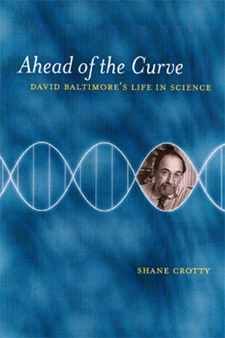 | Title: Ahead of the curve: David Baltimore's life in science Author: Crotty, Shane 1974- Published: University of California Press, 2001 Subjects: Autobiographies and Biographies | History of Science | Science Publisher's Description: Shane Crotty's biography of David Baltimore details the life and work of one of the most brilliant, powerful, and controversial scientists of our time. Although only in his early sixties, Baltimore has made major discoveries in molecular biology, established the prestigious Whitehead Institute at MIT, been president of Rockefeller University, won the Nobel Prize, and been vilified by detractors in one of the most scandalous and protracted investigations of scientific fraud ever. He is now president of Caltech and a leader in the search for an AIDS vaccine. Crotty not only tells the compelling story of this larger-than-life figure, he also treats the reader to a lucid account of the amazing revolution that has occurred in biology during the past forty years. Basing his narrative on many personal interviews, Crotty recounts the milestones of Baltimore's career: completing his Ph.D. at Rockefeller University in eighteen months, participating in the anti - Vietnam War movement, winning a Nobel Prize at age thirty-seven for the codiscovery of reverse transcriptase, and co-organizing the recombinant DNA/genetic engineering moratorium. Along the way, readers learn what viruses are and what they do, what cancer is and how it happens, the complexities of the AIDS problem, how genetic engineering works, and why making a vaccine is a complicated process. And, as Crotty considers Baltimore's public life, he retells the famous scientific fraud saga and Baltimore's vindication after a decade of character assassination. Crotty possesses the alchemical skill of converting technical scientific history into entertaining prose as he conveys Baltimore's huge ambitions, intensity, scientific genius, attitude toward science and politics, and Baltimore's own view about what happened in the "Baltimore Affair." Ahead of the Curve shows why with his complex personality, keen involvement in public issues, and wide-ranging interests David Baltimore has not only shaped the face of American science as we know it today, but has also become a presence in our culture. [brief] Similar Items |